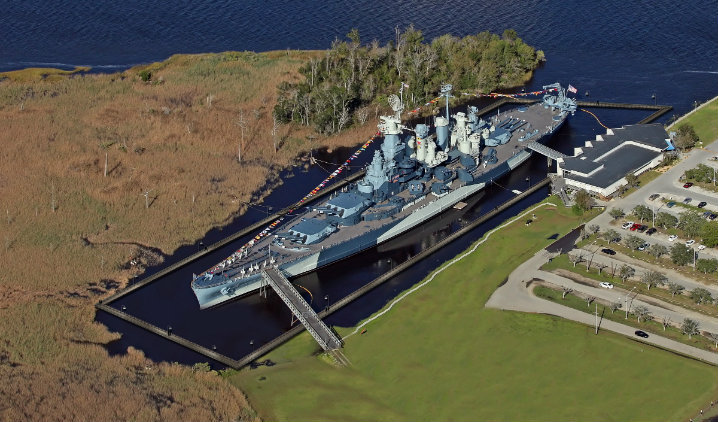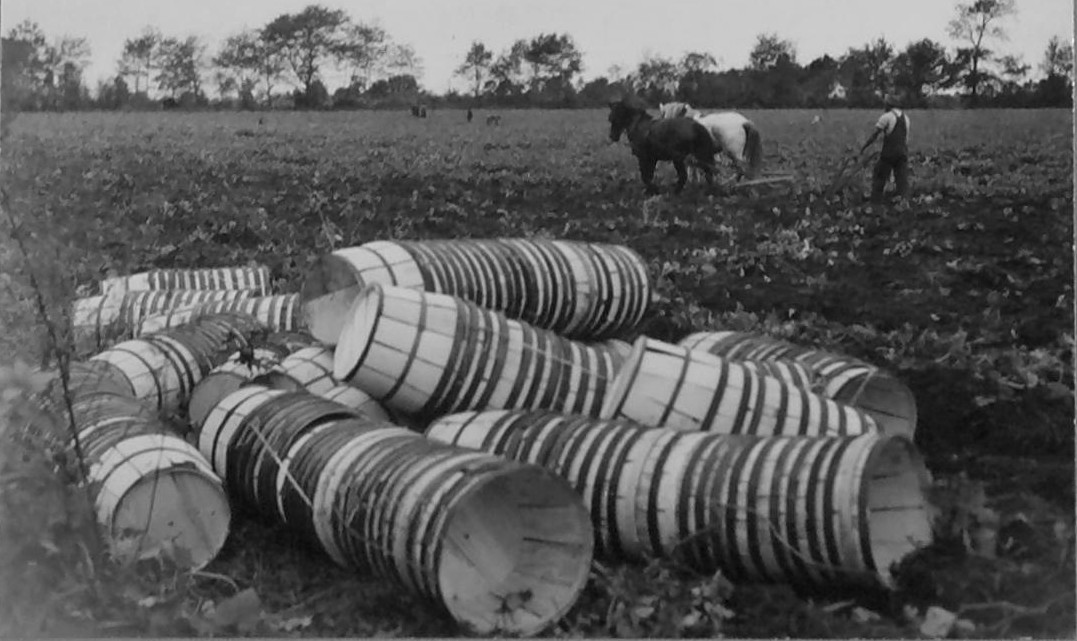
WILMINGTON — Nestled on 65 acres of the nearly 3,200-acre Eagles Island, the USS North Carolina has long been a favorite destination for North Carolinians. She sits in a muddy berth, permanently moored in a hurricane-protected slip, surrounded by a salty tidal pool.
The nearly 75-year old battleship is both a national historic landmark, a local historic treasure that attracts more than 250,000 visitors a year and a vivid reminder of service and sacrifice.
Supporter Spotlight
“Most importantly, she is the memorial for the 10,000 men and women from North Carolina who served and died during World War II,” noted Capt. Terry Bragg, a Jacksonville native who took the helm in 2009 as the battleship’s executive director.
But the old girl needs immediate attention. Since arriving at her berth across from Wilmington’s waterfront in 1961, wind and water at the tide line have left the hull paper-thin in places and in danger of giving way. Her last major dry docking and repair work was done in 1944 while she was still engaged in the war in the Pacific.
The Generation Campaign was launched in April to finish raising the $17 million needed to replace sections of the steel hull, to add a walkway around the ship and a new education and nature trail on Eagles Island.
The ship, really a city at sea, is a handful, with over 100 tanks, thousands of meters of piping and appurtenances. The ship undergoes annual state and federal inspections, and painting and repairs take place year-round. “We are constantly monitoring our systems,” says Bragg, a retired Navy captain with more than 30 years of service.
The Navy retains proprietary interest in the ship as a heritage site in perpetuity. Its contract with the state requires that North Carolina maintain the battleship in good condition for visitors. The Navy conducts a thorough annual inspection for compliance.
Supporter Spotlight
“When the Navy ‘donated’ the Battleship to North Carolina back in 1961, it was with the stipulation that the state would maintain it according to naval protocol,” Bragg notes.
In the past few years, the Navy has redefined the standard on how frequently a donation ship should have a major hull repair – a minimum of every 20 years. The Battleship North Carolina hasn’t had one since 1953. During a 2012 repair on the bow hull, it became very obvious that major work was needed.
So Bragg and his team looked at all the options and researched preservation successes around the world. One plan involved a $35 million dollar investment and at a minimum, a one year trip to Virginia for repairs, which would have required the dismantling of the super structure to fit under the Cape Fear Memorial Bridge, pulling the ship out of the mud and towing it through unpredictable seas. There was no guarantee that it would survive the journey.
The team decided instead on a safer and less expensive plan that would leave the ship in place and allow her to remain open to the public.
“Basically, we will build a watertight cofferdam, or a steel wall around the ship and then pump the water out to repair the hull,” Bragg explains.
It is a very technical solution that has been approved by the Navy and the state Division of Coastal Management, which issued a CAMA major permit for the work. The cofferdam and steel repairs are estimated to cost nearly $13 million. The dam will remain in place to allow for easy repairs in the future, Bragg adds.
After the repairs to the hull, the 1,700-foot-long cofferdam will sit in the shadows of a new Veteran’s Memorial Walkway to be built all around its exterior. Through a donation from the State Employees’ Credit Union, the 14-foot-wide, 11-foot-tall walkway will provide visitors a panoramic view of the ship, and allow views of the port side that have never before been seen. At the south end, a 2,800-square-foot uncovered “quarterdeck” is planned, with two 600-square-feet covered pavilions to provide much needed shade for summer visitors.
In addition, the CAMA permit covers a new Expedition Walkway, a 2,300-foot-long, 10-foot-wide boardwalk and adjacent platforms to serve as outdoor classrooms along the river. The battleship is a coalition to preserve Eagles Island, and Bragg and his team have worked closely with other members to design a plan that would benefit everyone.
Dawn York is president of the Cape Fear River Watch. She is excited about the new project. “Cape Fear River Watch will be able to engage the public in riverine field activities including monitoring water quality, observing sea level rise effects, recording native versus invasive marsh plants and providing a framework for fisheries restoration discussions,” she explains.
York thinks the battleship has proven its commitment to conserving and managing the natural and cultural assets of Eagles Island, one of the last remaining freshwater tidal marshes in the state, by developing the new walkway.
“The battleship, under the direction of Captain Terry Bragg, is North Carolina’s biggest environmental steward and has repeatedly demonstrated support for Cape Fear River Watch and the environment in general,” she says. “The battleship is a model for ecotourism in the state by maintaining its mission of representing our history as well as preserving local native estuarine habitat important to many species in southeast North Carolina.”
Cape Fear River Watch is a partner for the walkway and has developed a proposal for an educational kiosk that would provide hands-on activities for young people to engage in the outdoor natural setting of Eagles Island.

The island is a part of the Brunswick River and Cape Fear River marshes — one of the largest and most exemplary tidal freshwater marsh complexes in the state, notes Michael Schafale, a terrestrial ecologist for the state’s Natural Heritage Program. “The marshes are home to a number of rare species, including the only place remaining in the state for one, the rare skipper (Problema bulenta), and one of only two remaining habitats for another, the Carolina bishopweed (Ptilimnium ahlesii),” he says.
There are other rare species, including viviparous spikerush (Eleocharis vivipara), white doll’s-daisy (Boltonia asteroids) and riverbank evening primrose (Oenothera riparia).
“Several others have not been seen in many years but might still be present,” Schafale adds. “These include the rainbow snake (Farancia erythrogaster) and diamondback terrapin (Malaclemys terrapin).”
Bragg is well aware of the sensitivity of the ecosystem surrounding his workplace. Walking around the deck he is quick to point out a family of American white ibis that has grown up nearby. A biologist at heart, he enjoys the many species visible from the ship. “Our three alligators are Charlie, Charlene and Clyde,” Bragg says. “We see pelicans, osprey and I even saw a blue kingfisher once,” he laughs. “Coincidentally, our plane on deck is a Kingfisher, too.”
And those ibis? “We watched the chicks turn from brown to white,” he smiles.
How to Donate
There are several ways you can give: • Text the word Battleship to the number 41444 • Visit www.battleshipnc.com and click the donate button • Mail a check made out to Friends of the Battleship North Carolina, P.O. Box 480, Wilmington, NC 28402. Please note on the memo line “Generations Campaign.” • Visit the battleship for an onsite donation. If you have further questions on pledges or other ways to give, contact Marty Feurer, Campaign Director, at 910 251-5797 x3019 or at development@battleshipnc.com.








